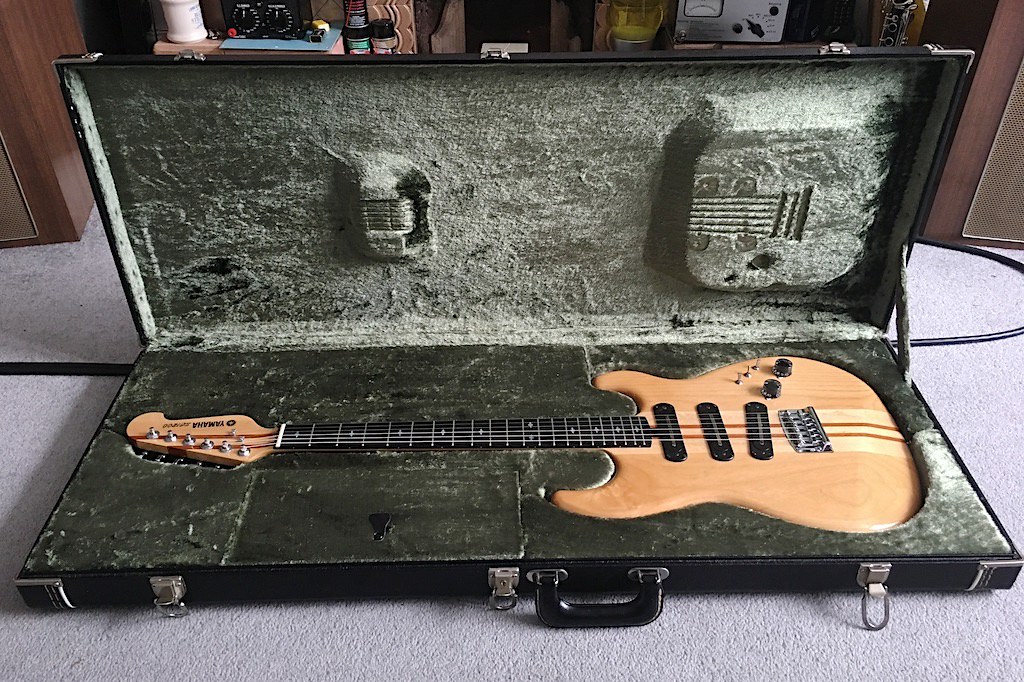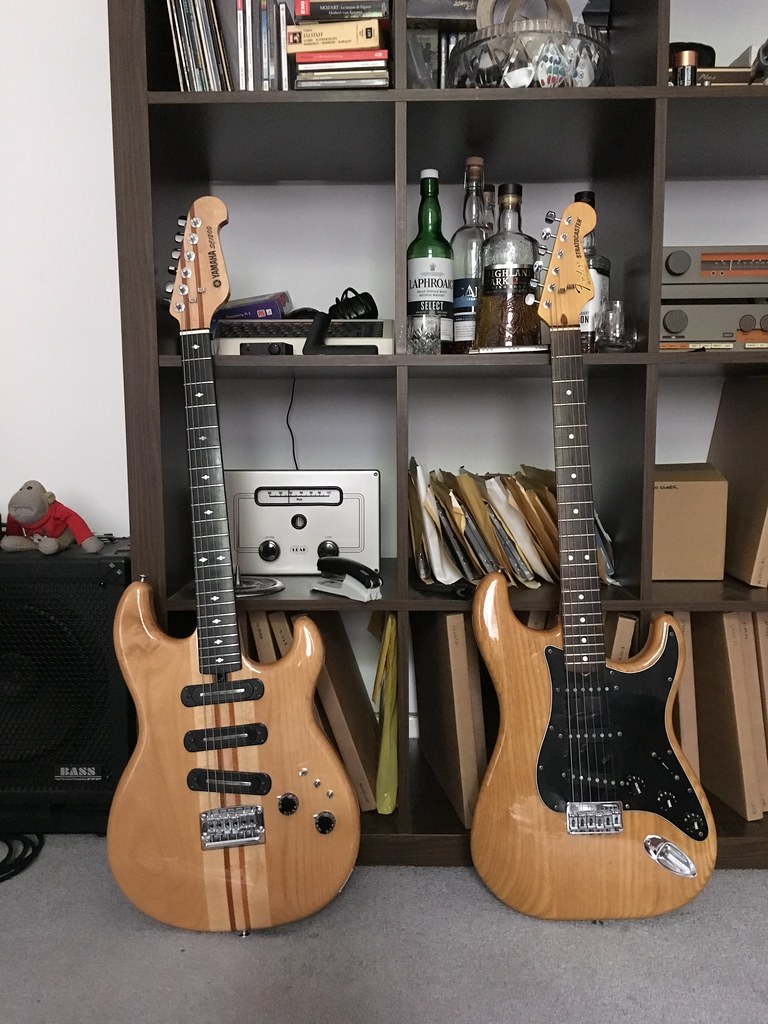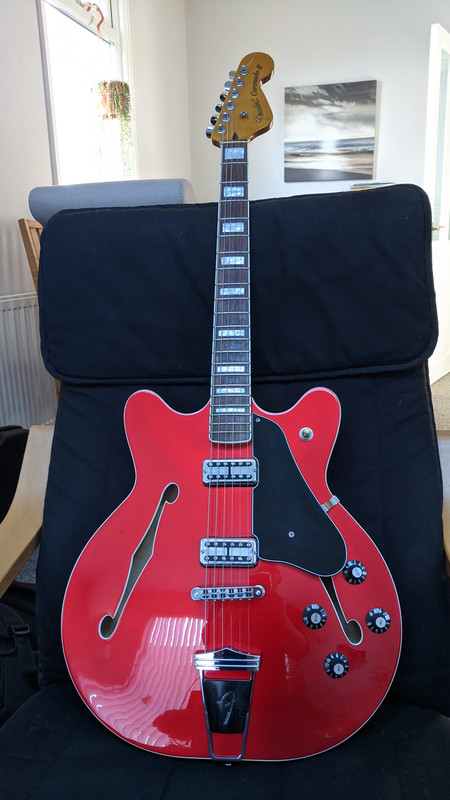Just googled the SC there - had pictured something more like a double-cut SG type body shape (d'oh that would be the 'SGNNN' series at a guess) but it's quite a different machine altogether. Very stratlike indeed. Nice things.

Yes, definitely heavily Strat-influenced. It‘s a rare guitar, IIRC it only appeared in the Yamaha catalogue in 1978 and had morphed into something vaguely similar but with a trem and a three a side headstock by the next year (SC5000). It dates from a really interesting period for me, the point where the Japanese companies had stopped copying (‘lawsuit era’) and were taking what they had learnt and were trying to build better guitars than their American influencers. This one was the single-coil equivalent of the now classic SG1000/SG2000, though Aria and Ibanez were also producing similarly good guitars with the Artist, Musician, YS guitars, SB basses etc, but it is before everything went off in a pointy headstock heavy metal direction (Ibanez now own that pretty much outright with the now classic JEM etc). Very interesting guitars.
The SC1200 is beautifully balanced, sits perfectly either on a strap or on the knee (how I play), has a very comfortable neck and every pickup combination one could ever need with each being separately switchable between on/off/phase invert aside from the neck which is just on/off. As such you can get combinations you can’t get from a Strat. The unusual ‘blade’ pickups are higher output and noticeably warmer/fatter sounding than my Strat (an ‘82 Dan Smith-era hard-tail), so it will do nice jazz tones through to the typical Strat stuff.

I was thinking about this the other day and my suspicion is I’ve never actually held or played a really, really good Strat, e.g. anything that say Mick from TPS would like. Back when I was in bands in the ‘80s nearly everyone I knew played Japanese stuff, Westone, Ibanez, Aria etc, and the few that had Fenders had late-70s to the then current mid-’80s. I’m not sure I've even played one with a nitro finish! As such I’ve no idea where the SC1200 fits in the grand scheme of things, I just know I really like it and certainly prefer it to my Strat (which is actually quite a collectable/sought-after model that similarly was only around for a single year).
This year I am going to try and rationalise my guitars as I have far too many and not necessarily the ones I want. The ones that will stay are the Yam SC1200, the £50 1970 Yam classical acoustic, and obviously the Shergolds (two Marathon basses, one Masquerader). The ones that will go are the Les Paul, the Strat, the AVRI Jazz Bass and the Gordon Smith. If I can successfully achieve that I’ll likely go shopping for a proper ‘60s Jaguar or Jazzmaster I think...
PS Today’s TPS was good, that Neon Egg Planetarium thing is amazing!




